The building blocks of STEM

Reading culture turns the page on literacy
Student-led Ako Café brews life skills

The building blocks of STEM

Reading culture turns the page on literacy
Student-led Ako Café brews life skills
OF SCHOOL BUSES
pril Fools’ Day is probably not the most auspicious day to start a whole new way of travelling to school in Aotearoa, but back in 1924, it was a day hotly anticipated by ākonga in the Piopio area.
At the turn of the 19th century, many of our rural schools across the motu were extremely isolated, and most consisted of just the one room and teacher. These schools had trouble recruiting qualified teachers who were willing to live in such isolated places. In addition, the cost of maintaining all of these tiny schools and their equipment was exorbitant.
The then Department of Education had a plan to solve these issues: consolidation. This meant merging smaller schools to create one larger school. However, for this plan to work, they had to be able to get the children to the new school.
Piopio (King Country) was chosen as a pilot location and the Department set up Aotearoa’s first school bus fleet (comprised of three Model T Ford buses) to take ākonga from Te Mapara, Paemako and Arapae


to the new school in Piopio. The buses were delivered to Piopio on 26 March and went into service on 1 April 1924.
This new way of taking children to the school, rather than locating the school near the children, turned out to be a major triumph.
Further successful consolidation schemes in Tapawera (Nelson) and Ruawai (Northland) paved the way to school buses becoming part of the fabric of school life.
100 years later, the Ministry still plays an important role in getting ākonga to school. Every day the Ministry assists over 100,000 ākonga by providing school buses, conveyance allowances and a specialised school transport service (for those ākonga who have safety and mobility needs).

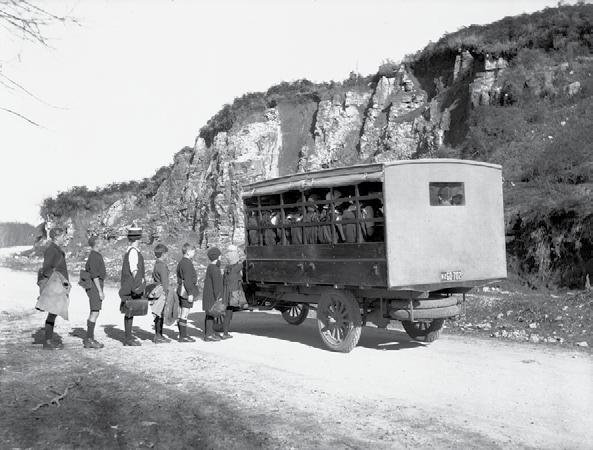
In this issue, we explore learning that starts conversations, connects communities, and inspires ākonga to dig deeper. From fostering a culture of reading enthusiasm to embracing hands-on experiences, each story reflects a common dedication to exceptional and engaging practice.
Schools like Ōtāhuhu Primary School and Burnside High School are nurturing curiosity and critical thinking skills through engaging STEM workshops and innovative digital technology resources.
Blomfield Special School’s Ako Café and Long Bay College’s Tino Akoranga exemplify a commitment to providing students with practical, real-world learning experiences that equip them with valuable life skills and empower them to excel beyond the classroom.
From commemorating educational milestones like 100 years of school buses at Piopio College to fostering inclusivity and belonging for Pacific rainbow youth through initiatives like Laulima, schools and kura are actively connecting with their communities and celebrating diversity and achievements together.
Kia pai te rā, nā Sarah Wilson, Ētita | Editor
P.S. This my second to last edition as editor before I begin an exciting new venture – parenthood. Meanwhile, the stewardship of the Gazette will pass to my trusted colleague, Keri McLean, for the rest of 2024. We’ll introduce Keri in our next edition. Ngā mihi for your continued support and readership.
Pacific
PUBLISHED BY
Education Gazette is published for the Ministry of Education by NZME. Publishing Ltd. PO Box 200, Wellington. ISSN 2815-8415 (Print) ISSN 2815-8423 (Online) All advertising is subject to advertisers agreeing to NZME. Advertising terms and conditions www.nzme.co.nz/ media/1522/nzme-advertisingterms-sept-2020.pdf
STORY IDEAS
We welcome your story ideas. Please email a brief (50-100 words) outline to: gazette@education.govt.nz SUBSCRIPTIONS eleni.hilder@nzme.co.nz VIEW US ONLINE Web: gazette.education.govt.nz Youtube: youtube.com/ edgazettenewzealand
The early days of creating an educational hub for the Belfast community
On the cover
Page 6. Mount Roskill Grammar School have made a significant effort to encourage students to read for fun, and it’s sparking engaging conversations between staff and students, and with whānau.
KEY CONTACTS Reporter gazette@education.govt.nz
Display & paid advertising Jill Parker 027 212 9277 jill.parker@nzme.co.nz Vacancies & notices listings Eleni Hilder 04 915 9796 vacancies@edgazette.govt.nz notices@edgazette.govt.nz
DEADLINES
The deadline for display advertising to be printed in the 10 June 2024 edition of Education Gazette is 4pm on Friday 24 May 2024.
Explore how Ōtāhuhu Primary School is building engagement and supporting the development of STEM-related skills through LEGO workshops.

Gathered around five tables piled with colourful building elements, Ōtāhuhu Primary School’s Year 5/6 bilingual Samoan class are fizzing to get creative.
Mixtures of multi-coloured LEGO pieces are ready to be transformed by the young hands, some of whom are getting to grips with the building bricks for the first time.
Aligned with the inquiry topic, ‘Where have all the bees gone?’, ākonga are poised to interpret the theme in 3D while learning about the environments and conditions these insects need to thrive.
“There is no right or wrong when engaging in these activities,” says Clare Thompson, founder of The Brick Pit NZ, who have been organising LEGO workshops in Tāmaki Makaurau Auckland for the past five years.
“Students are learning at their pace and have the freedom to create original designs within the school’s inquiry topic, and beyond.”
After 25 years as a full-time art teacher, Clare founded The Brick Pit in 2019. Her love of sculpture led to her
using LEGO in the classroom and she saw the impact it had on people of all ages.
“I initially introduced LEGO to the classroom as an extension of my art programme. Then I realised students were more interested in playing with LEGO than learning about art! I thought, ‘OK, how can I make this bigger?’”
Over the past five years, Clare has led LEGO sessions in schools across Auckland and the wider North Island, each designed to cater for the specific learning objectives of that school. Funding from the Ministry of Education has enabled her to bring ‘thousands’ of LEGO pieces to schools where she can make the greatest impact.
The sessions provide challenges that encourage children to problem solve and express themselves, says Clare.
“By incorporating LEGO into their curriculum through these workshops, schools foster creativity, critical thinking, collaboration, and enable hands-on learning experiences that really light up their students.
“There is consistently 100 percent engagement in these activities. That is something that cannot often be said in a classroom setting.”
Ōtāhuhu Primary School principal Jenny Bernard sees firsthand the outstanding engagement this programme delivers.
“The most important thing for our children is that they are engaged. And here, they are not only engaged but they are creating – collaboratively.
“There are no barriers to learning for any children, including those who have English as a second language or have different abilities and needs.”
Jenny adds that many of their children wouldn’t have access to LEGO at home.
“For some, this is their first time experiencing creating with LEGO. Look around, there is not one child that is not engaged in this.”
Tangible and interactive
Clare has collaborated with various schools and educational institutions, including the Museum of Transport and Technology (MOTAT) and the New Zealand Maritime Museum, to incorporate LEGO into STEM and literacy learning. STEM learning draws on the science, technology, and mathematics and statistics learning areas of The New Zealand Curriculum. It also offers opportunities to connect with other areas, such as the arts and social sciences.
“LEGO provides a tangible and interactive medium for children to explore various concepts and ideas, allowing children to engage, experiment, make mistakes, and learn from them,” she says.
“Building with LEGO, children develop spatial awareness, fine motor skills, and logical thinking abilities.”
Promoting teamwork and communication skills are also key as children often work together in groups to complete tasks or solve challenges.
Clare says, “This aspect of LEGO workshops encourages students to share ideas, listen to others’ perspectives, and work towards a common goal. It also fosters a sense of community and belonging among participants.”
Conversation-starter
At Ōtāhuhu Primary, Year 5/6 bilingual Samoan class teacher Fiu Semo Letufuga is buoyed by what he sees.
“It’s great to see the children loving the activities, being engaged and concentrating on the tasks so well. They are so creative!
“I like to see them working on their own unique creations, as well as sharing, collaborating and communicating as part of a group at each table. They’re asking each other for ideas and sharing suggestions, as well as physically passing pieces ... Language skills are being developed on top of so much more.”
Pivot pieces of LEGO consisting of a ball and socket help teach children biomechanics and extend learning further. For example, beyond using such pieces to create a bird’s head that can rotate at different angles, discussion
ensues around similar joints in the human body and what they are used for.
Year 5/6 student Hale steers sideways from the bee theme to create another flying creation.
He says, “I made an aeroplane because I wish I could fly! I want to test how it flies and how it lands or crashes.”
His fascination with flying is developed in an unexpected off-shoot from the inquiry topic.
Another student shares his thoughts in Samoan, ‘’Wow! Ua matou fiafia tele e galulue ile faaogaina o LEGO! Manaia tele.” Translated, he said, “Wow! My first time getting to use LEGO. I love it!’’
Creating a platform on which to ignite passions and light up young minds while putting the fun into furthering learning proves, as Clare and countless kaiako have discovered, there’s a lot more to LEGO.
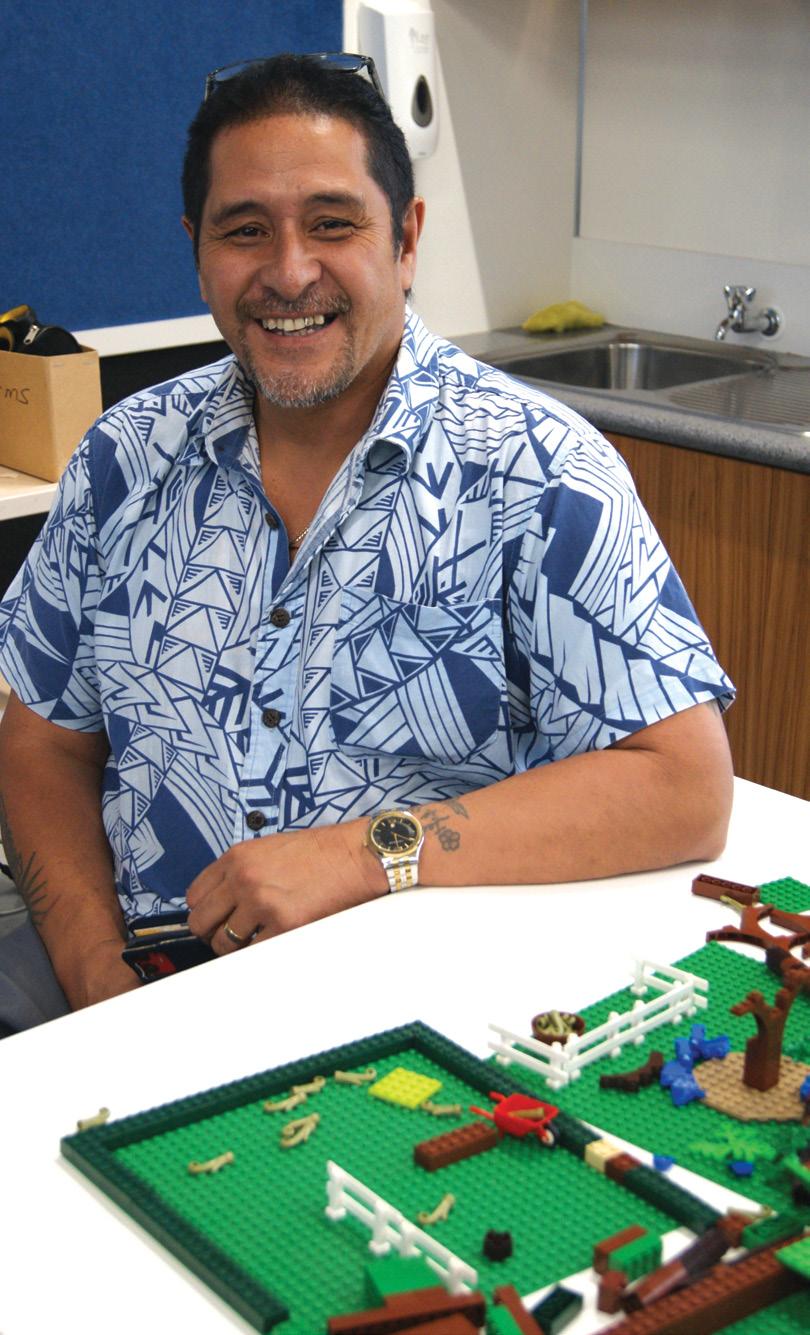
Clare discusses the benefits of building bricks, such as LEGO, in inquiry learning.
Promoting creativity and innovation: LEGO bricks provide an open-ended platform for students to express their creativity and imagination. By combining various shapes, colours and sizes, students can develop unique structures and models, encouraging them to think outside the box and explore new ideas.
Fostering collaboration and communication: When working on LEGO projects, students need to communicate their ideas, listen to others, and collaborate to achieve common goals. This process helps them develop teamwork and interpersonal skills while also improving their ability to communicate effectively.
Encouraging critical thinking: LEGO activities often involve solving complex problems and making decisions based on available information. This process challenges students to analyse situations, identify potential solutions, and evaluate the consequences of their choices, thus enhancing their critical thinking abilities.
Enhancing spatial reasoning and maths skills: Building with LEGO bricks requires an understanding of spatial relationships, symmetry, and geometry. As students work on their projects, they develop spatial reasoning and mathematical skills without even realising it.
Increasing engagement and motivation: LEGO activities are fun and engaging, which helps maintain students’ interest and motivation throughout the learning process. When students enjoy what they are doing, they are more likely to invest time and effort into mastering new concepts and skills.
“Students are learning at their pace and have the freedom to create original designs within the school’s inquiry topic, and beyond.”
Clare Thompson

Best practice for successful inquiry learning
To maximise the benefits of inquiry learning activities, Clare suggests that educators consider the following best practices.
Clear learning objectives: Establish clear learning objectives that align with curricula and guide students’ exploration and discovery. Make sure activities support the achievement of these objectives.
Open-ended challenges: Provide challenges that allow students to explore different possibilities and develop creative solutions. Avoid giving too much guidance or providing specific instructions, as this may limit imagination and innovation.
Collaborative workspaces: Create workspaces that encourage group discussion, idea sharing, and handson building. Provide enough space and resources for multiple students to work together comfortably.
Differentiation and scaffolding: Cater to individual needs by differentiating activities and providing appropriate scaffolding. This may involve adjusting the complexity of tasks, offering additional support, or extending challenges.
Reflection and evaluation: Encourage students to reflect on their learning experiences and evaluate their progress. This can be done through group discussions, journals, or presentations, allowing students to share their insights and gain valuable feedback.

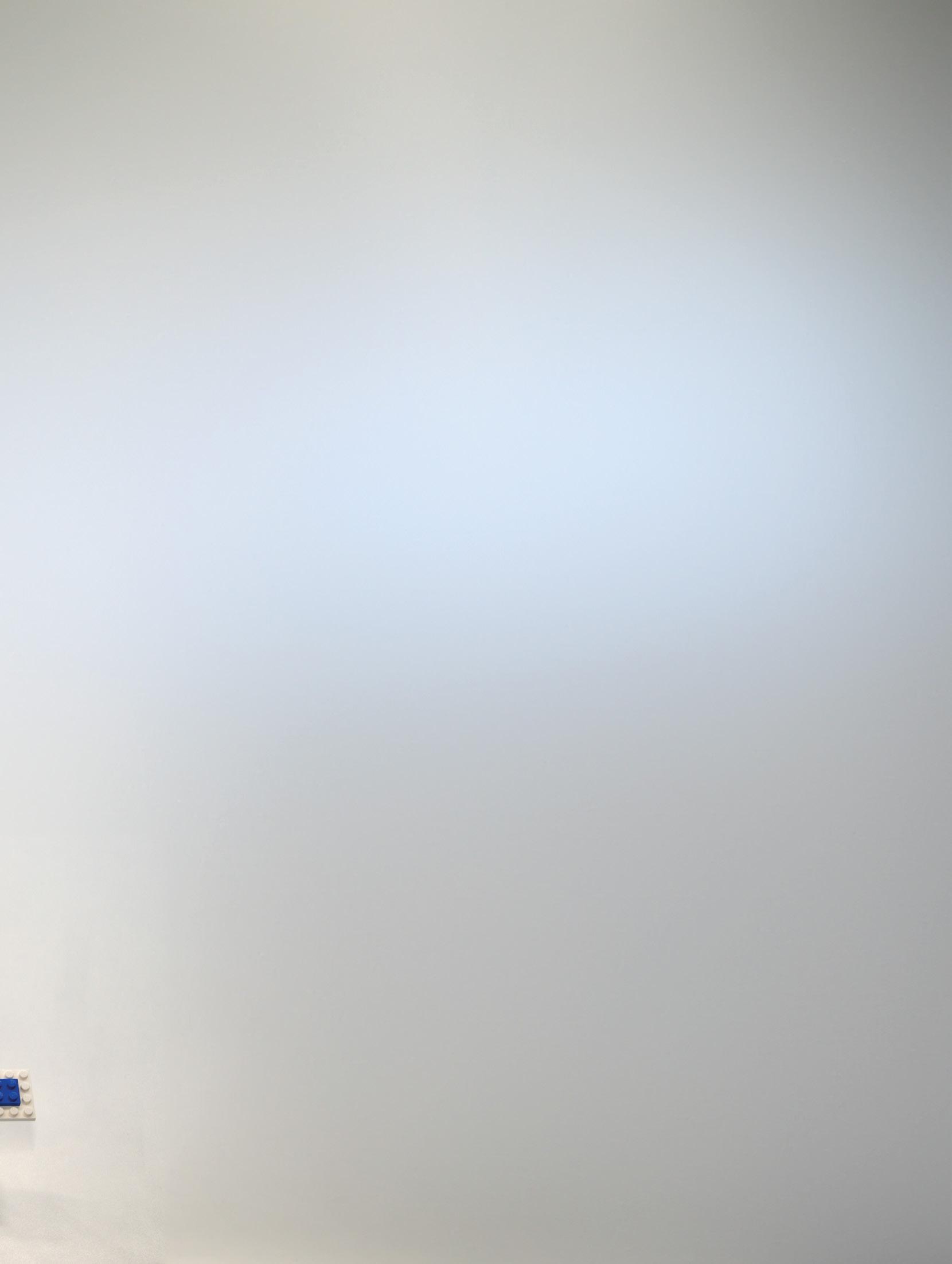
A g i l i t y
Unlock vast career opportunities with an Arts degree!
Employers are seeking graduates with critical thinking skills, deep cultural understanding, and exceptional communication expertise – all of which you can gain through a Bachelor of Arts.
With a range of degrees available, you can tailor your studies to your passions and aspirations, creating a degree that's unique to you.
Choose Arts at the University of Canterbury for endless possibilities!
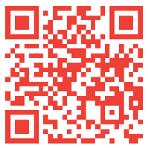
Scan the QR code to learn more.

With over 1,000 school kaimahi nationwide taking part in the recent Teachers Reading Challenge, many schools are realising that inspiring students to read for fun can have an astounding impact on their success and engagement in all learning areas.
All departments at Mount Roskill Grammar School have made a significant effort to encourage students to read for fun, and integrate a reading culture throughout all subjects, according to head of English Callum Gray.
When asked what strategies help to build a healthy reading culture for students, Callum first points to the relationship between the college’s library and learning departments.
“I think this cross-curricular collaboration is really important in promoting reading as something that
happens beyond the English classroom,” says Callum.
“The team we have had over the past two years in particular has gone above and beyond to build a strong reading culture amongst staff and students, and they’ve been aided by this in the creation of our new Learning Hub, which replaced our old library.”
Stacking the shelves with excitement Callum notes the range and selection of books is a vital part of building a strong reading culture, and also points to

the value of working with the National Library of New Zealand Te Puna Mātauranga o Aotearoa.
“We lost a lot of books during the floods at the start of last year, creating an opportunity to refresh and reinvigorate the collection. Collaborating with the National Library in this has been instrumental.”
He says the National Library has helped build the dedicated Year 12/NCEA Level 2 reading section in the Learning Hub, designed to help students with their reading portfolios.
“I’d encourage all schools to reach out to the National Library as they’ve been very helpful.”
Callum says they’ve also welcomed a wide range of writers to visit the school and speak to students, and students have also had the opportunity to go to the Auckland Writers Festival.
When considering how these initiatives build excitement around reading for pleasure and impact not only literacy education but success in other subjects, Callum says there’s ample evidence that “readers succeed, particularly in an inequitable education system”.
He points to research on this from the National Library and education experts.
“It’s not simply the benefits of knowledge acquisition, or building a greater vocabulary,” says Callum.
“The relationship between reading and writing is well-established, with greater skill and confidence in one leading to greater confidence and skill in the other.”

Building confidence and creativity
Callum highlights the raft of social and emotional gains with reading, citing greater empathy, mental health and wellbeing, stronger critical thinking and enhanced creativity.
“Readers succeed, particularly in an inequitable education system ... It’s not simply the benefits of knowledge acquisition or building a greater vocabulary.”Callum Gray
“Strong readers can navigate our curriculum with more confidence than those who find reading challenging. Low literacy locks students out of learning, and I think we’re all aware of the consequences of this in our schools and beyond.”
He raised the complexity of the literacy challenge, and says that they’re moving towards more direct, explicit instruction in the classroom to address it.
“Discussions with our maths department suggests that our numeracy challenge might be a literacy challenge as well,” he elaborates.
“I think reading for pleasure is definitely part of addressing the challenge, but we all need to do more in terms of our classroom teaching.”
When it comes to what staff and students are reading, Callum says they rely on recommendations from everyone.
“Our library manager, Catherine Ross, was exemplary in this. As well as being a huge reader (and reviewer), she took recommendations from students and staff and ordered books in,” he says.
“As a department we’ve updated our collection and kept it relevant, and I think cultural responsiveness needs to be an even stronger driver in this.”
Making reading visible
Callum recognises that many teachers have put “a lot of love and work” into promoting reading to their students.
One such example is digital technology teacher
Farrah Chavez, who has been encouraging reading in her department by having a cabinet of books in the classroom, encouraging reading during spare minutes in class and asking students what they’re interested in.
She also keeps a poster with the words “I am currently reading …” and space for her to write the book’s title and author, which has prompted interesting conversations with students.
“One time, I had Born a Crime by Trevor Noah on the poster, and a student started asking about the book. Trevor was one of his favourite comedians,” says Farrah.
“At the end of the conversation, he asked for the details on how he can borrow the book from the school library.”
There is another staff initiative where teachers take pictures of the book-binds they have read and display them on the wall stacked on top of each other. The aim is to eventually create a stack matching their heights.
“Not only is this a good resource of book recommendations for students, but as a teacher, I enjoy having conversations with my colleagues about the books they read.”
Finding that students who read during break times tended to follow instructions well, and were adept at working independently, Farah says their writing also improves.
Shaping interest
For her computer sciences class, Farrah says she has shared books she personally found helpful while studying, often with themes around the digital world.
She lists examples, including Secret Coders by Gene Luen Yang for junior students, Girls Who Code by Stacia Deutsch for girls and Ghost in the Shell by Masamune Shirow for senior students.
“Once students are hooked and eager to learn, it becomes easy to recommend more technical books,” says Farrah.
“Books with lots of images such as the Head First book series are my go-to when students want to learn more about certain digital technologies.”
Both Callum and Farrah say that increased efforts to read and encourage student reading has brought them closer to their own children at home.
Callum says some teachers he’s talked to have said last year’s Read NZ Te Pou Muramura Reading Challenge had a real impact on their habits.
“Some who’d stopped reading a lot, are now reading again, deliberately carving out space in what feels like ever busier lives. I think there’s huge value in seeing reading as part of addressing our mental health.”
Farrah agrees, and says for book-loving teachers like her, having conversations with students about the books they read is a delight.
“These book discussions also give me a glimpse of what the young readers enjoy these days,” she says.
“As a parent myself, I love having my child come home chatting about a book they learned in school. It’s a great conversation starter instead of the usual ‘How was school?’”

At Selwyn College, literacy lead Caitlin Funk says along her journey in the classroom, she’s seen anecdotal evidence pointing to a raft of benefits in and outside of the English department when students read for fun.
“The more a student reads books that engage them, the more their vocabulary improves and the quicker they get at making inferences,” says Caitlin.
“This helps in all subjects as all of us provide reading or writing opportunities to our students where they either need to make inferences or create pieces that use precise vocabulary.”
She says finding time can be a major challenge for students, who already lead busy lives in and out of school.
“Students are really committed at my school, so to promote reading often makes the student think that they need to pick reading over something else rather than finding ways to fit it into their already busy life.”
She says modern technology can be of use here, pointing to resources like GoodReads, The Storygraph, Instagram and TikTok (or BookTok).
“There are loads of engaging ways to track reading.”
In her school’s house system, Caitlin says they have junior and senior reading ambassadors who drive student engagement and connection over reading for pleasure.
“These students speak during house assemblies, host book chats once a week where students drop in to chat about books or get recommendations, and the students create Instagram posts recommending books.”
Teachers are also invited to post on Instagram what they’re reading, as well as having a place in the classroom committed to this.
“Several teachers either have a place on their classroom board where they write what they’re reading or they have it in their email signature, reinforcing that reading is for everyone.”
Making these efforts to adopt a positive reading culture for students can have a flow-on effect to parents, too.
Caitlin says during parent-teacher conferences she enjoys chatting with parents about their child’s reading material, and potential options.
“It does help with parents because a major message that goes home at the start of the year from English teachers is for parents to talk with their children about what they’re reading and to discuss reading together.”

The Learning Hub at Mount Roskill Grammar School is a space to exchange ideas.

Seatoun School’s librarian, Wendy Bamber, says access to the library and an up-to-date reading collection is a priority for all teachers, who place immense value on reading for pleasure.
“They are all huge advocates for use of this time and afford this time dedicated to booktalking, exploring the collection through activities, and browsing and enjoying the time together.”
Through talking to students and actively seeking books that are sought after, Wendy says teachers also enjoy engaging in reading goals and bonding with students.
“They see that their students are excited to continue the story and to know what happens next!” says Wendy.
“We also promote the fact that the staff also read – our entranceway is currently displayed with images of our staff reading on holiday as we took part in the Read NZ Te Pou Muramura Summer Reading Challenge.”
Included in the spectrum of other benefits that emerge from students reading for pleasure, Wendy says there are greater opportunities for academic success and students also tend to develop higher empathy.
“This kind of empathy enables children to understand their own perspectives and gain better knowledge of people in different situations, countries and cultures,” says Wendy.
“Being able to read more fluently also improves stamina when it comes to reading for other subjects and promotes critical thinking for strong information literacy.”
Although 10 years ago the library’s focus was on supporting the curriculum, Wendy says it now leans more into encouraging reading for pleasure.
“Nowadays, many of these high-quality resources are online and all schools have access to the incredible services of the National Library.
“Through knowledge of the students at Seatoun, I select resources which I believe our students will be most interested in reading, and this means a variety of fiction, non-fiction and graphic novels at different levels of reading ability.”
She says parents are also invited into the library space, which engages them in the quest to make reading accessible and enjoyable for all.
Literature is promoted through the New Zealand Book Awards, and Wendy says students review books and attend workshops with finalists.
“Author visits are a great way to show students that writing is a career they can aspire to in New Zealand and authors without exception promote reading for pleasure in their presentations.”


PMarking 100 years since the first school bus service arrived at their grounds, a community event at Piopio College on 5 April shed light on the profound impact and timeless significance school buses have had on our rural communities.
ast and present students of Piopio College joined with students from Piopio Primary, Āria Primary and the local community to hear from guest speakers, see past bus models and sing a lively rendition of The Wheels on the Bus – all in celebration of the significant local and national milestone; 100 years of school buses in Aotearoa.
On 1 April 1924 the country’s very first school bus service arrived in Piopio, bringing students from around the district to a central school.
One hundred years on, school buses still play an important role in breaking down barriers to education for rural students, according to the current principal of Piopio College, Rakesh Govind.
“We can’t survive without the school transport system,” says Rakesh. “It would be such a hurdle and a barrier for our parents to be trying to get their children daily to school.”
With some students travelling up to an hour and a half each way, Rakesh is adamant that due to the remote and rural nature of their homes, school buses remain vital for rural students having access to education.
Having only been in the role at Piopio College for two years, he says that the significance of the school buses has blown him away.
“A lot of our students would struggle to attend school if it wasn’t for our rural school buses. Coming from Auckland I had never thought about it like that,” says Rakesh.
Rakesh says one of the hits from the event was having a replica of one of the first buses (as well as a 1970s Bedford bus and a modern bus) on display, with some students getting the chance to jump on board the replica bus for a ride.
“The replica bus is a big component in the history of our kura.”
When the first rural schools in the Piopio area were consolidated in 1924, a school bus service was implemented – otherwise children living in remote spots would find it hard to get themselves to class.
Three one-tonne Model-T Ford trucks were converted into buses, which would pick up students from Arapae, Paemako and Te Mapara and deliver them to Piopio.
Over the next one hundred years, the Piopio school bus service would go through many transformations, and some teachers would even find themselves jumping behind the wheel to drive the students to and from school.
One of the event speakers, Brian Tegg was one such teacher. Brian, who was principal from 1979 to 2002, says that this was just part of the job.
“It was one of the things that was required of you if you taught in a rural school – if you could drive a bus, you did,” he says.
“The replica bus is a big component in the history of our kura.”Rakesh Govind
Brian says he enjoyed speaking to the Piopio students and school community at the celebratory event, and one of his highlights was initiating an enthusiastic rendition of the beloved children’s classic, Wheels on the Bus.
“Much of the audience was school students, so listening to how the replica bus was made isn’t the most interesting thing they want to hear,” laughs Brian.
“I asked them, ‘how many of you know this song?’ A forest of hands went up, so we all sang it together with all the actions – it was fabulous.”
Brian points to an Evening Post story printed on 12 April 1924 which laid out the glowing reception at the time to the new mode of transport.
“Advantage from a general-health point of view was demonstrated during the storm and flood conditions last Friday. All the children arrived at the school, dry and in time for the classes. In the case of those from Paemako, 36 out of 38 were present, whereas, under similar weather conditions probably less than half could have trudged to the local school,” the article reads.
Another of the event’s guest speakers, Jean Toms, spoke of her memories of catching the school bus to school in 1935 when she was five years old, and says she remembers the exciting journey.
“Where I lived, there were lots of small farms and we all milked cows in the 1930s. I added it up and there must have been about 40 children in total. Too many for the
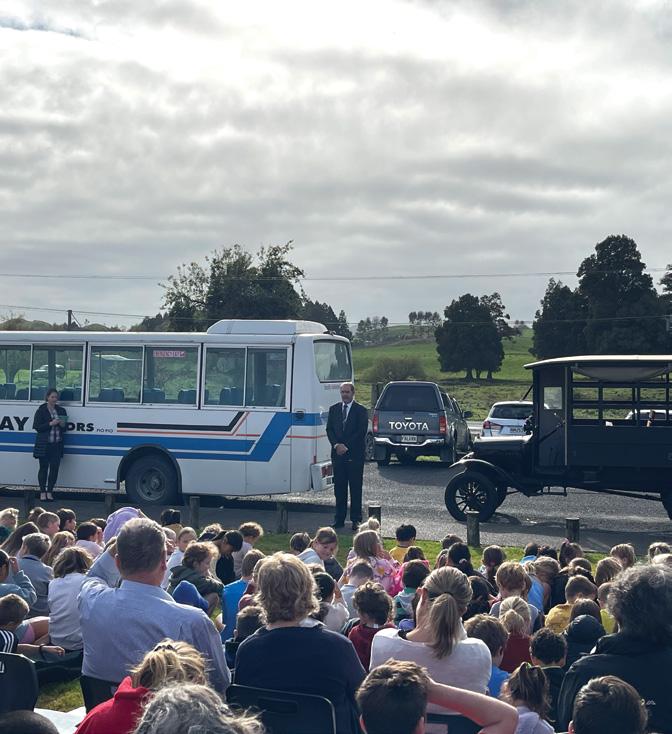

“The buses today are very clean and not as old as the 1924 first bus.”
Luka, student
small bus, so we got put on a bigger Bedford bus which was a bit more modern.”
As her family didn’t own a vehicle until 1946, Jean says the novelty of riding the school bus was incredibly exciting at the time.
“We didn’t even have a vehicle. It was about three kilometres from my house to the school, and my other option for getting there was riding my pony, which I did once I was old enough!”
Jean says the bus was usually full, and the bus driver would know to wait for them if they were late.
“He knew we were out milking and busy working in the mornings.”
Piopio Primary School student Luka also shared his grandmother’s memories of the school bus, and compared to his own experience.
“The first run was on 1 April 1924 … With the bus’s canvas sides flapping in the breeze and its transverse leaf-spring suspension magnifying every bump in the road.
“The buses today are very clean and not as old as the 1924 first bus … the buses we have today aren’t as cool as the old bus but at least we have buses.”

One hundred years on from that first school bus fleet in Aotearoa New Zealand, the Ministry of Education still plays an important part in making education accessible for not only our rural tamariki, but also for other tamariki that face barriers to education.
Over 100,000 ākonga across the motu receive some form of school transport assistance from the Ministry.
» Daily school buses: The Ministry provides a daily school bus service for ākonga where distance or lack of public transport presents a barrier for them attending their closest school.
» Specialised School Transport Assistance (SESTA): SESTA is a specialised transport service that assists children and young people who have safety or mobility needs that prevent them from travelling independently to school. Ākonga are transported by either a van or car and, depending on their needs, this can be in a shared or solo service.
» Conveyance allowances: Not all ākonga live near a school bus route or are able to have a SESTA vehicle service. In these cases, the Ministry pay their whānau a conveyance allowance. A conveyance allowance is a contribution to the cost of transporting eligible ākonga to school or their nearest bus route.
» Bulk transport funding: The Ministry runs two bulk funding transport programmes – Direct Resourcing and Māori-medium Schools. Schools and kura enrolled in these programmes arrange their own school transport assistance for their eligible students.
» Technology Classes buses: Where schools do not have technology classes at their site, the Ministry provides buses to transport Year 7 and 8 students to their nearest technology centre.
Public Transport Authorities such as Auckland Transport and regional councils, also provide school bus services. These operate mainly in urban areas such as cities and large towns.
More information on School Transport Assistance at education.govt.nz/school-transport
A celebration of past and present school transport.

51,920 Daily school bus students*
2,595 Daily school bus conveyance allowance students
24,637 Directly Resourced schools (bulk funded) daily school bus students
8,661 Māori-medium Schools (bulk funded) daily school bus ākonga
30,592 Year 7 and 8 Technology Class bus students
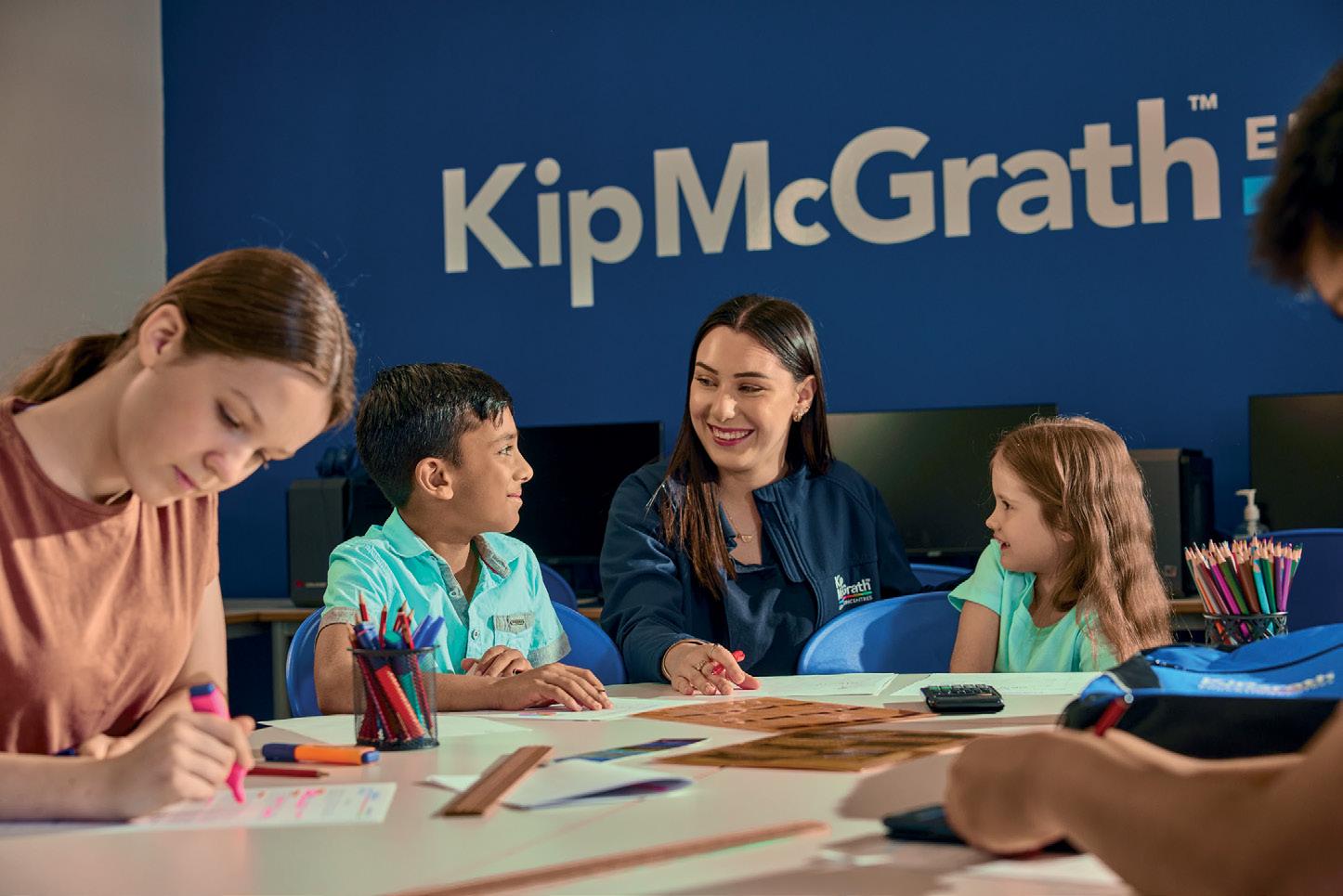

 MAHI TAHI
MAHI TAHI
Long Bay College’s journey towards exceptional learning, fueled by extensive research and collaboration, culminates in the creation of Tino Akoranga. It’s a guide that transcends the pages to enrich the entire school community.
In 2019 Long Bay College reviewed its approach to teaching and learning. With a view to considering research-based approaches and developments in culturally responsive practice, relational pedagogy, and cognitive science, the goal was to support teaching and learning in being exceptional.
The process also considered educational approaches from across the world through the lens of Aotearoa New Zealand and the college community, and led to the development of Tino Akoranga – a guide empowering ākonga, kaiako and the community to ‘care, create and excel’ in their own way.
CJ Healey, principal at the North Shore secondary school for seven years, says, “We have always wanted to establish, for our school, a point of difference.
“I asked, ‘How are we able to evolve our practice at a level that will support our staff and our students in their understanding of how they learn?’ That was the remit.”
What it has led to couldn’t have deputy principals Lauren Wing and James Heneghan more enthused. Mahi tahi (working together) may have resulted in a weighty, glossy A4 book, but it’s what’s beyond the pages that matters most.
“We progressed from hearing a talk by Graeme Aitken in 2019, with various provocations to deputy principals, to this coming into being,” says Lauren, deputy principal in charge of professional learning and development.
Weaving a unique kete
Deputy principal in charge of curriculum, James, recalls the embryonic phase of the project.
“We had this blank canvas, so we started by asking, ‘What is the science of teaching?’ And then, ‘How do we refine our craft?’”
This led to more and more questions, with a view to establishing how both staff and students can maximise the teaching and learning experiences available to them in the school environment.
A curriculum and pedagogy team, chaired by James, was fully supported by the school’s board to delve deeply into the work of esteemed educators, including Graeme Aitken, Russell Bishop, Richard Mayer, Viviane Robinson, Craig Randall and more.
Extracting what they felt fitted with the needs of their ākonga and kaiako, the drivers of Tino Akoranga wove together a unique kete of knowledge to carry into practice.
“We could see real value in the different pedagogies, but we had to look at how we could relate these to the teaching and learning at Long Bay College,” says James.
“It’s been a process of translating strategies off the page and into the classroom,” adds Lauren.
Providing dedicated professional development days was key to expanding this mahi and establishing a whole school approach to developing, implementing and evolving the bespoke approach to learning.
The document introduces itself as, “underpinned by a diverse research base, contextually aligned to our ākonga, and proven within our classrooms and practices”, and “a road map for teaching and learning that … creates a shared educational philosophy across the college”.
“A key early learning was to create a shared understanding of what exceptional teaching and learning is. And how do we distil and translate these ideas from international and local sources for use here at Long Bay College?” says Lauren.
These ideas led to the creation of three ‘Exceptional Learning Principles’:
» Tikanga – Our living classroom culture for learning
» Ako – Know the student, know what to teach and how to teach it, and know it has been learned
» Mahara – Teaching for memory. Learning is a change in memory and teaching supports that change.
“We have always wanted to establish, for our school, a point of difference. How are we able to evolve our practice at a level that will support our staff and our students in their understanding of how they learn?”
CJ Healey
From this, developed a raft of strategies and practices stemming from each of the three principles. The 92page Tino Akoranga book documents these, as well as addressing curriculum design, adaptive routines, culturally responsive practice, considerations for application, lesson plan templates and a bibliography bursting with research references.
How the process and programme has been embraced by the school is testament to the way it has been a collaborative and, importantly, a safe environment that values vulnerability.
“There were some massive questions asked,” smiles James. “And we brought a real vulnerability to this. It has
always been about improving, not proving.”
Senior leaders were the first to place themselves in the spotlight for observation and feedback, modelling the vulnerable approach needed to make this authentic and effective.
As well as regular PLD days and sharing at kāhui ako conferences, an annual showcase enables staff to share learnings and creates a collegiate atmosphere. Lauren says the depth and breadth of engagement is “massively heartening”.
CJ says this body has been a massive undertaking. But the approach, the principles underpinning it and the delivery serve as true examples of mahi tahi, of benefit to all involved, as individuals and as a collective.
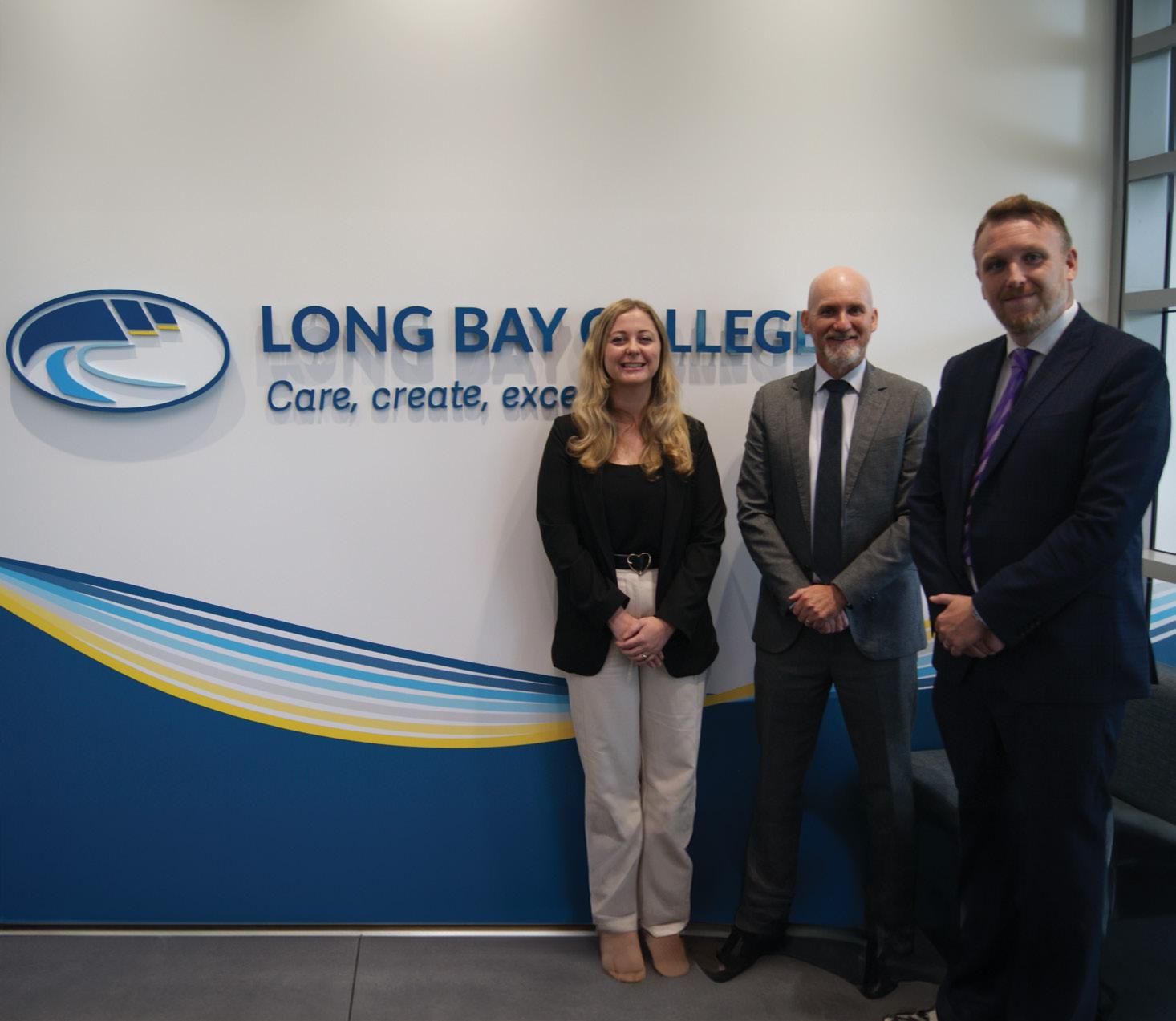
“It’s been a process of translating strategies off the page and into the classroom.”Lauren Wing



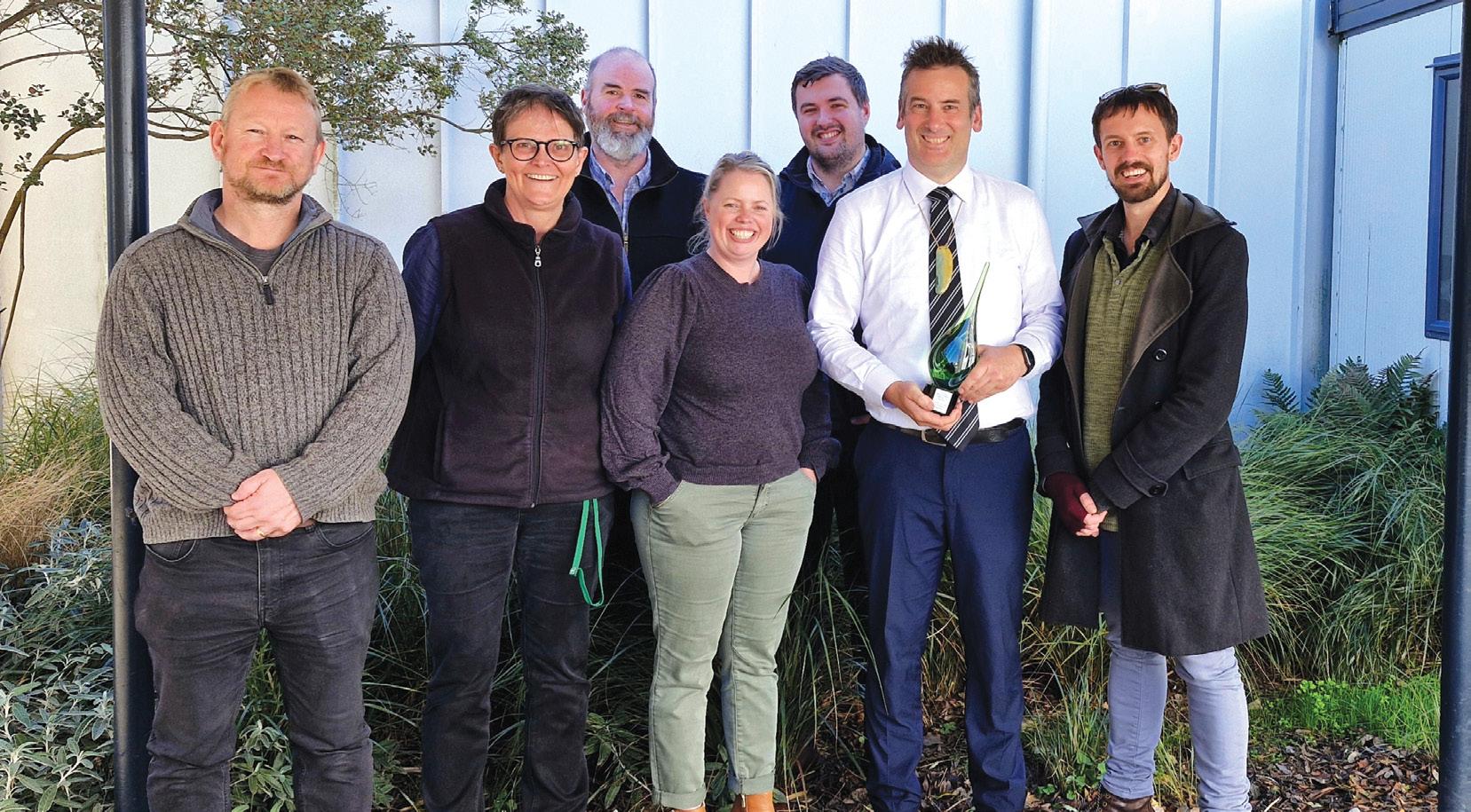
Burnside High School teachers are casting a wide net with Techquity, an innovative online resource aiming to equip educators across Aotearoa New Zealand with the tools they need to teach digital technologies effectively.
An adage quote tells us that if you give someone a fish, you feed them for the day, but if you teach them to fish, they are fed for a lifetime.
A group of teachers from Burnside High have taken this to heart in their aim to make the digital technologies they teach available to all teachers and students across the country.
The result is Techquity; a comprehensive online resource teaching full programmes for all Year 9 and Year 10 digital technology and electronics courses. There are also courses for some Year 11–13 subjects including computer science and programming, electronics and product design.
The website is entirely free to use and totally accessible; made by teachers for teachers.
Head of department for technology, John Creighton, says the resource has been designed to support both tech-specific teachers and those teachers who find themselves leading a subject outside their area of specialisation.
“This was the driving force behind it; that it could be accessed anywhere by anyone at any time.”
Burnside High School has a strong technology department. On a team of 21 teachers, there’s a software engineer, a graphic designer, a web designer, an electronic engineer, a network engineer and a games developer, all sharing these skills in a teaching capacity.
Putting their brains together, they began to craft the online resource to distribute content aimed to better their students.
“For example, if the student was away, they could still access the learning from home. If they were working fast, they could move into the next topic or another area of interest. Or they could learn the subject at their own pace,” says John.
The Burnside teachers saw the potential of the resource and decided to officially turn it into an online textbook with resources, assessment tasks, exercises and supportive videos.
“Absolutely anyone can pick up the resource and teach it, even if they’re a maths or science teacher that’s been tapped on the shoulder to help for the day. If a school doesn’t have a digital technology teacher, there’s still that option for the students who want to study the subject.”
The resource was a team effort created in conjunction with the Digital Technologies Teachers Aotearoa subject association with NEX funding. Computer scientist and Canterbury University professor Tim Bell also contributed advice and resources.
“Techquity is just the tip of the iceberg. Underneath are all the incredible people who helped create it,” says John.
Techquity was made on an open-source Google platform.
“Its design works as drag and drop so no hardcore HTML and CSS wizardry is going on behind the scenes, rather it’s a simple way we can upload and change content relatively easily.”
It just took “five unbelievably passionate teachers who put hours and hours of their time into getting the system up and running.”
The team went through several iterations of the resource; the first worked for Burnside students and the next versions were created to work for other schools.
Teachers across the motu have been using the resource in its entirety or incorporating it into their own school programmes.
“People can’t believe the generosity of the teachers and the hours they’ve put in to create this resource,” says John.
John says the end goal is for every student in Aotearoa New Zealand to have access to quality technology programmes.
“We want there to be programmes that will enable students to carry on with their career in digital technologies or in a career that uses digital technologies – which is almost everything.”
He hopes that Techquity will be able to help students go beyond learning basic digital technology skills, branching out into computer science, electronic concepts and programming fundamentals, even at an early age.
John’s number one tip for schools wanting to create their own subject courses in a similar format to Techquity is, “Find the right group of people that really want to get something out there.”
The second bit of advice is to touch base with the supporting communities; universities, polytechnics, and the subject association. This is to make sure the information is accurate and relevant.
“Get lots and lots of feedback and then take that feedback on board. Don’t be afraid to be told that you haven’t got it right and that you need to make a change. Back yourself and back your resource.”

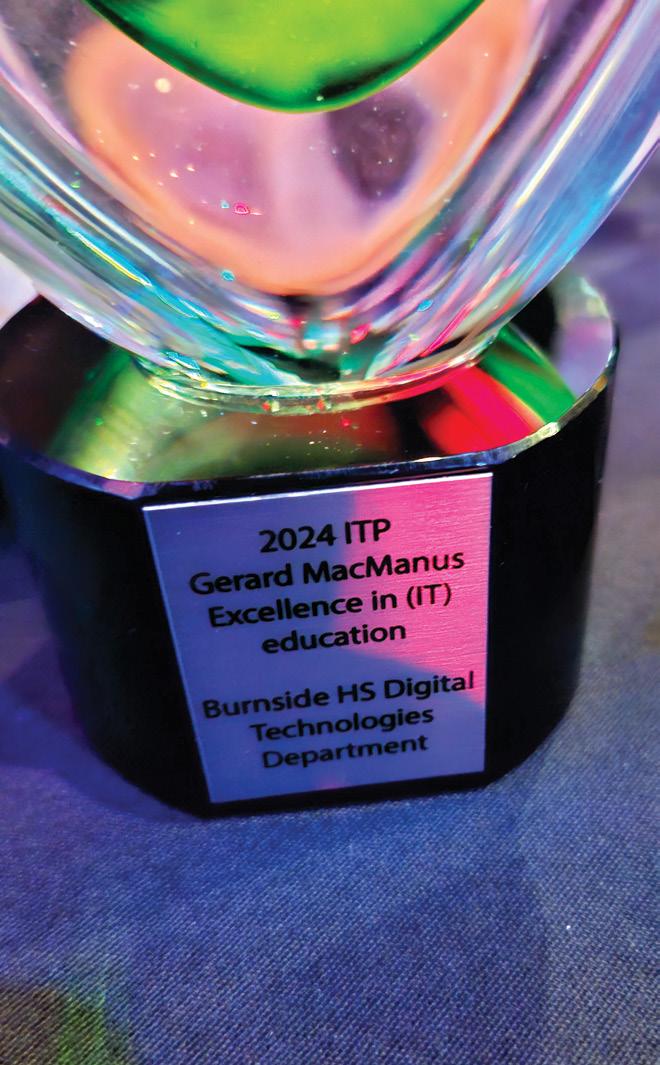
To find out more, visit techquity.co.nz
Steva Auina, a proud Fa’afafine and advocate for LGBTQIA+ Pacific youth, is turning the tide in South Auckland secondary schools with Laulima

Laulima is a visionary programme formed in 2022 by Steva Auina, the director of O Le Alofa Ltd. It stands as a beacon of hope and unity for Pacific rainbow youth in South Auckland.
With its roots firmly planted in the ethos of collaboration and inclusivity, Laulima aims to cultivate a nurturing environment where every “rainbow kid”, as Steva affectionately calls her students, feels a sense of belonging and can thrive.
At its core, this programme embodies the spirit of ‘Laulima,’ which is a Samoan term loosely meaning ‘many hands working together’. This reflects its commitment to collective empowerment and mutual support.
Inspired by the vibrant energy and resilience of Pacific rainbow youth, the programme embraces diversity as its greatest strength, fostering a culture of acceptance and celebration of each person’s unique journey.
Celebrating O Le Alofa and Laulima: Steva Auina (middle) with Kiva Jackson and OliviaSianna Masoe, senior pacific engagement advisors for the Ministry of Education.
The programme is funded through the Ministry of Education’s Pacific Education Support Fund.
Vogue balls are a joyous and high energy underground queer subculture founded by African American and Latino LGBTQIA+ communities in the USA. Among many other facets of a ball, voguers will compete for trophies and the reputation of their ‘Houses’.
In 2022, through her involvement with vogue balls in Auckland, Steva noticed an increasing number of Pacific youth in attendance. She also noted the vogue balls were held late in the evening and wondered if the timing was impacting on homework or study time.
When Steva spoke with some of the participants to check in about their education, they would respond with “we love school, but we want to be here [at vogue balls] too”.
“They felt like they needed to come to vogue balls to feel that sense of community, that sense of belonging,” says Steva.
Steva recounted her days as a student at Kelston Boys’ High School in West Auckland and the joy she felt in being a part of a group of transgender friends known as ‘Kelston Kweenz’.
“The schools can only do so much – they really want to support the students, but they don’t know how to. Sometimes it comes down to the approach,” says Steva.
To help bridge the gap between what schools can and can’t support, and with the backing of the Ministry of Education, Steva is currently working with and mentoring Pacific students who identify as fa’afafine or transgender through the Laulima programme.
Weilette, Elijah and AJ are in their final years of school at De La Salle College in Tāmaki Makaurau. They share how important Laulima is to their engagement with education and overall wellbeing.
“The programme really made us feel validated and heard,” says Weilette.
AJ adds, “Having someone like Steva supporting us means a lot; she just gets us.”
The programme funding has made it possible for Steva to provide necessary resources to support the learning of her students too, including laptops, desks, and chairs for a study corner at home, AT Hop cards for the bus, uniform items, and school fees.
“Having the resources like stationery and laptops provided to us through Laulima helps us to be more engaged with school and schoolwork,” says Elijah.
Laulima currently supports students from Kelston Boys’ High School, De La Salle College, Southern Cross Campus, Mangere College, Avondale College and Aorere College on a weekly or monthly basis.
Making connections and aiming high Participating rainbow students say the highlight of the programme so far is the Laulima showcase held last year.
The showcase brought together an array of inspiring fa’afafine, fakaletī, akava’ine, fakafifine and takatāpui actors and creatives in a performance that displayed genuine storytelling, artistry, and resilience.
The showcase was well attended by families, local community members and friends, all eager to witness a spectacular evening of entertainment.
“Some of our teachers came to watch the showcase too. We felt really supported by them and felt like they were proud of us. Also, some of the boys from school came to watch and support us, it was heartwarming to see them there,” says Weilette.
The event held a lot of sentimental value for the students, proving that their dreams are valid and attainable.
“The showcase allowed us to connect with our rainbow communities, the older generation who helped pave the way for us. They’re the reason we can have programmes like this in school,” says Weilette.
“It was a safe and inclusive space for us. We all felt very loved during that moment. It was a really beautiful event that I hope we can do again” adds AJ.
Earlier this year, O Le Alofa Ltd hosted a black-tie event named Chapter 31, to celebrate the successes of Laulima and set the foundations for an exciting journey ahead.
It was an intimate event attended by ‘aiga, agency representatives and school staff. Chapter 31 acknowledged important personal and professional milestones achieved to date, including the two-year anniversary for O Le Alofa Ltd.
Steva and her students are really keen to hold another showcase for their families and communities.
Currently, Steva is the sole facilitator of Laulima, and although she has hopes to expand the programme, more hands are needed to reach this goal. She says the interest in Laulima has increased considerably and she would love to offer it where needed.
Weilette emphasises the need and hopes of programmes like Laulima, saying, “I want the government to see that there are people like us out here who are struggling. [Laulima] makes us feel like we belong in these spaces, and it encourages the younger generation too.”
“[Laulima] makes us feel like we belong in these spaces, and it encourages the younger generation too.”
Weilette, Year 13
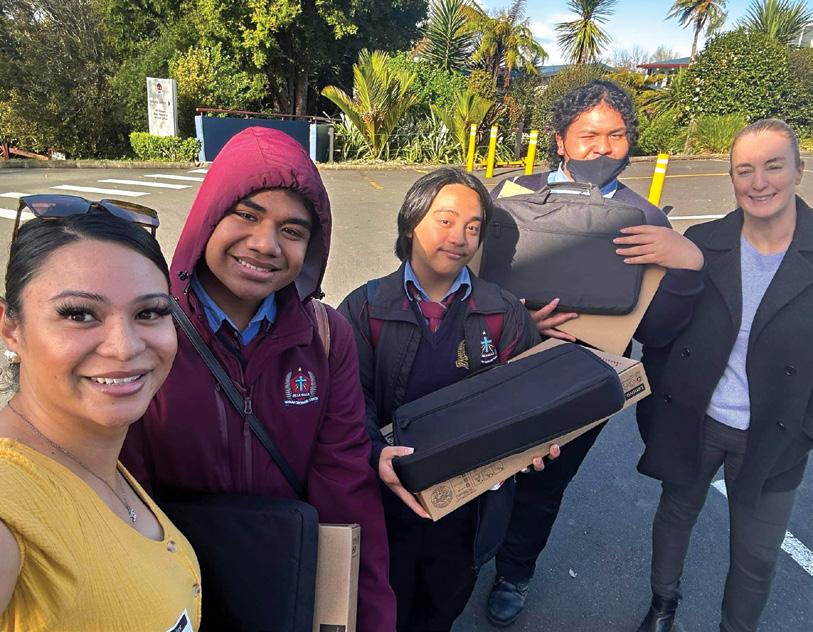
“I think of our students as not having special needs but of special abilities.”
Caleb Piggott
 School staff support ākonga to learn practical life skills: from shopping the day before, to food preparation, to making coffees on the barista coffee machine.
School staff support ākonga to learn practical life skills: from shopping the day before, to food preparation, to making coffees on the barista coffee machine.
At Blomfield Special School Central Campus in Whangārei, ākonga lead the way in a café initiative that nurtures and celebrates their potential.
Ako Café at Blomfield Special School Central Campus provides real-life learning opportunities for ākonga –teaching everything from practical barista, food preparation, and interpersonal skills to gardening and woodwork.
The student-led café, which opens for an hour every Wednesday, has become a permanent fixture at the school since starting in 2022 and is a living example of the school’s mantra ‘Discover Potential’.
Ākonga handle everything. That includes cooking, taking orders, delivering food to tables, and perfecting the art of creating coffee and tea.
Planning and preparation starts on Tuesdays and learning opportunities linked to the café are woven across the rest of the week.
Supported by food technology teacher Anna Alison, students create the shopping list and collect ingredients.
Celebrating potential
In a truly collaborative and cross-curricular effort, students have also worked alongside hard materials teacher Caleb Piggott. They created cutting boards, a money box, food covers, and a café sign.
Caleb says the success of the café has been its recognition and celebration of the potential of ākonga.
“I think of our students as not having special needs but of special abilities.”
This year will also see the installation of vegetable gardens which will connect students with the produce they used in Ako and promote a holistic approach to wellbeing.

To date ākonga have raked the soil and built raised garden beds. The next steps are for planting and weeding to kick off.
At the café, all food and drink items cost two dollars and the profits go towards a special day out for ākonga at the end of the year.
Café staff members are barista trained and pass these skills on to ākonga, as well as making sure operations run smoothly.
The initiative was the brainchild of former food technology teacher Carol Alsweiler in the early 2000s. It was reestablished by Amie Pinson, food technology teacher at the time, Sandy Van Doorne and Tracie Mitchell. The school has also been supported by the Healthy Active Learning team.
Healthy Active Learning is a joint-government
initiative between Sport NZ, Health New Zealand | Te Whatu Ora, and the Ministry of Education. It supports over 900 schools and kura to improve the wellbeing of tamariki and rangatahi.
“Ako Café’s commitment to teaching life skills, promoting physical activity, and fostering healthy eating is bringing to life the values of Healthy Active Learning by creating a supportive environment where tamariki not only realise their potential but thrive mentally and physically,” says Sport Northland kaimahi Ashleigh Ellis.
Principal Sally Wilkinson expresses her joy at the opportunities Ako Café has brought ākonga and is excited to see it develop into the future.
She says the initiative has not only strengthened bonds between students and staff but has also created valuable job opportunities for graduates.
Her advice for anyone considering a similar initiative: “Start small and manageable.”
“Ako Café’s commitment to teaching life skills, promoting physical activity, and fostering healthy eating is bringing to life the values of Healthy Active Learning.”
Ashleigh Ellis

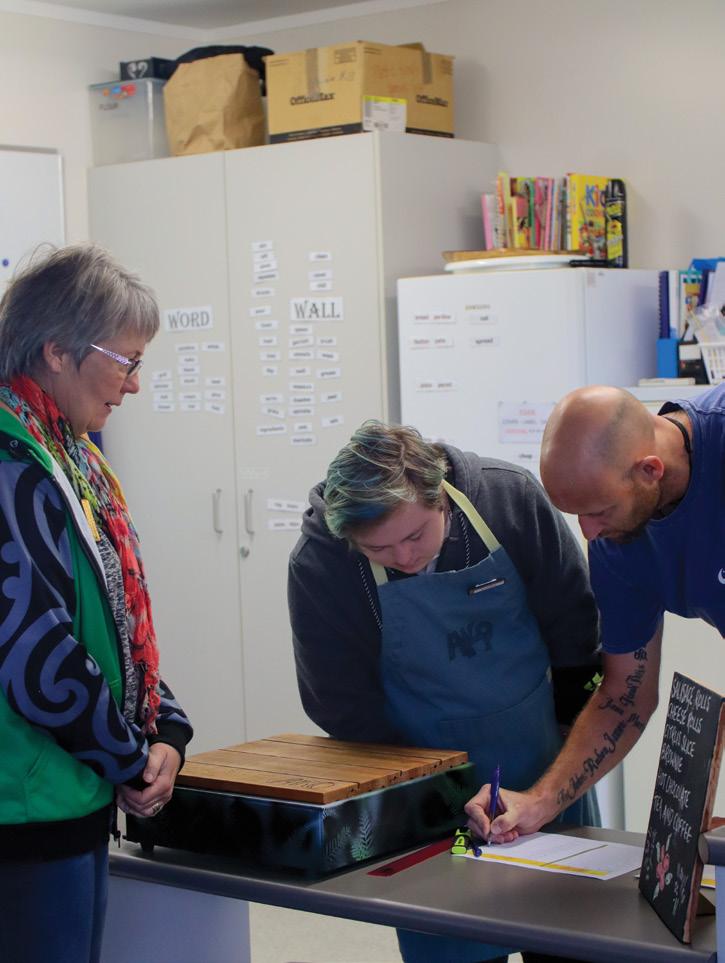



ARTIFICIAL TURF SURFACING FOR SCHOOLS: SPORTS COURTS PLAYGROUND SURFACING COURTYARDS AND LANDSCAPING AREAS CRICKET WICKETS
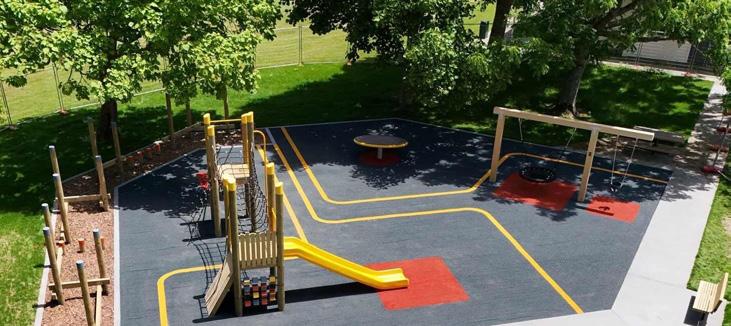




School attendance is vital to learning success.
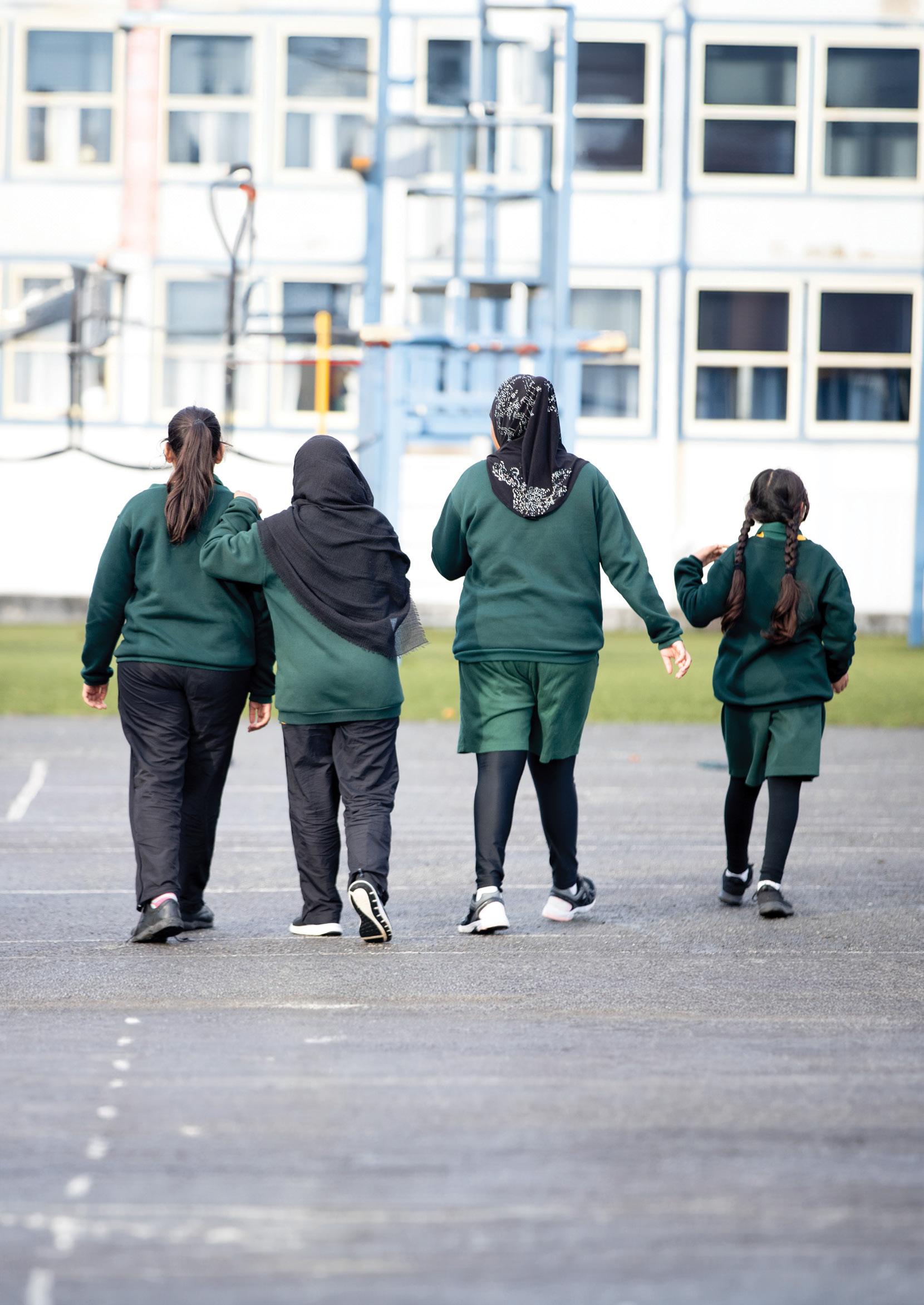
Student attendance: A guide for schools and kura
Student attendance: A guide for parents and caregivers
Schools, parents, and caregivers all have a key role in lifting school attendance.
Children learn better when they experience uninterrupted learning which is vital to give them the best chance of learning success.
In recent years, consistently across all terms, absence due to short-term illness/medical reasons were the largest contributors to justified absences and remain higher than before the Covid-19 pandemic.
The Ministry of Education has worked with health agencies to update public health guidance to emphasise the importance of school attendance.
Refreshed health guidance from Health New Zealand | Te Whatu Ora is now available for parents and schools to help decide when a learner is well enough to attend school, when they should stay home sick, and when to seek further health advice. The guidance includes information about a wide range of symptoms as well as information about helpful supports for students who experience mild anxiety.
The Government has set a target of 80 percent of students attending regularly by 2030.
In term 4 2023, 53.6 percent of students met the criteria for regular attendance, an increase of 3.5 percentage points from the 50.1 percent in term 4 2022.
The regular attendance rate for term 4 2023 is 12.5 percentage points lower than 2019 (66.1 percent), the year preceding Covid-19 and the first-time regular attendance was reported for term 4.
The refreshed guidance supports schools and parents to have educationally powerful conversations about the importance of school attendance and contributes to community awareness about the value of regular attendance for improved educational and life outcomes.
The Ministry encourages schools to share links to the guidance on their websites and in their school newsletters.

The percentage of students regularly attending school and kura in term 4 from 2019 - 2023
Source: Term 4 2023 attendance report at educationcounts.govt.nz.

Pūtahi-Belfast School in Canterbury is located on two different sites, and they are taking education beyond the classroom, into the playing fields, and out into the community.
Pūtahi-Belfast School shares two campuses across two sites. There’s the junior campus for Years 1–4, and just across Main North Road, along a 10-minute pathway, is the senior campus for Years 5–8.
The school is located in Belfast, a suburb in Ōtautahi Christchurch that has undergone considerable growth during the past decade.
Principal Sue Elley says, “Belfast is almost like a small town on the edge of Christchurch rather than a suburb.”
When initially faced with the idea of having a new school for the community, about seven years ago, Sue says they thought this could cut the community in half between an old and new Belfast.
It was also becoming clear that the needs of their younger ākonga were changing and different to senior students.
“We’ve noticed more work needs to go into helping young tamariki get ready for formal and academic learning, especially in the post-earthquake environment,” says Sue.
As a result, the Pūtahi-Belfast staff are making changes that better suit the junior school, specifically changing timetables to accommodate play-based learning. The two-campus model facilitates this approach.
The school has drawn on Dr Kathleen Liberty’s findings to reduce students’ stress. To support their learnings, classrooms are set up to provide a calm environment.
For example, younger ākonga learn in classrooms that are styled more traditionally. In contrast, the senior classrooms are more collaborative and reflect potential workplace environments.
“The two campuses mean we can focus more on the individual student’s educational needs,” says Sue.
Both campuses also have playgrounds specifically for the age of the ākonga. This includes a football field, an indoor basketball court, and adventure playground on the senior campus. On the junior campus loose parts play equipment has been purchased.
An important part of having two campuses is making sure the school identity remains united. It’s the school’s curriculum, based on the local community, that helps to do this.
For example, surrounded by the rich ecosystems of the Groynes, the Waimakariri River and a local stream that runs across the school’s edge, a key part of the curriculum is looking at these waterways.
Sue says another local aspect is what they call ‘enterprise.’ With the school sitting next to an industrial area, it is intended that senior ākonga build relationships with neighbouring businesses and firms.
“Belfast has a rich history, it’s a very old suburb and there’s lots of things it’s known for which will take our ākonga out of the classrooms and into our local community to get to know people and the way things are done,” she says.

In many ways, Sue says their local curriculum demonstrates how learning goes outside of the classroom, and into the community.
Examples include a connection with a local retirement home, visits each year from ‘Orchards in Schools’, who teach ākonga pruning (a reflection of the commercial apple fields in Belfast) and newly created plots on the senior campus for ākonga to grow vegetables.
The relationship goes both ways, with the school also looking to bring the community into their environment.
“Our aspirations to be a hub within the community will take time to progress. We are planning to offer our school halls out to the community once we have worked out things like insurance cover, cleaning arrangements and hire costs. We have had some enquiries from local churches about accessing our facilities.”
As well as having two campuses across two sites, the school also shares the senior campus with co-located Pītau-Allenvale Base School. Although sharing grounds, the two schools each have their own identities with their own principal and school board.
“If you looked at the site itself from above, you’d think it was one school because of the layout, but it’s been cleverly designed.”
Pītau-Allenvale offers educational programmes for five to 21-year-olds with learning support needs. The shared site means diversity and inclusion is championed.
Year 6 ākonga Sam says it’s very interesting to have a different school right next to them. His parents say they hope it will give the Belfast children more awareness of others in the community.
Pītau-Allenvale principal Ian Poulter says that with both schools on the same site it has naturally taken time to get sorted, but as the two schools become more settled, they are increasingly discovering, exploring, and planning ways to support each other to their mutual benefit.
“It is still early days, however the skills of the staff of both schools are beginning to be shared. Pītau-Allenvale staff have been able to share strategies and approaches that benefit neurodiverse students.
“Some of our students will become involved in Pūtahi Belfast’s kapa haka, and some of our students are certainly enjoying joining in with celebration events,” explains Ian.
Activities are also planned for the ākonga to collaborate.
“It means both ākonga and the community can see diversity. We’re creating this identity within the Belfast community of doing something a bit unique. We think of ourselves as an educational hub within the area,” says Sue.
“We’re creating this identity within the Belfast community of doing something a bit unique. We think of ourselves as an educational hub within the area.”
Sue Elley


Canterbury schools are cheering diversity through shared sites and satellite schools. They are seeing benefits, not only from sharing facilities like libraries and halls but through kaiako and ākonga collaboration. Staff, ākonga and their whānau can come together across schools for common causes and celebrations.
Waitaha School is a specialist school in Rolleston with a base facility at Te Uru Tarata-Lemonwood Grove School and three satellites at Horoeka Haemata-Rolleston College, West Rolleston School Te Kura O Te Uru Kōwhai and Knights Stream School-Mingimingi Hautoa.
Waitaha Base and Te Uru Tarata-Lemonwood Grove schools share kapa haka practice, have a joint playground used by all ākonga and they’ve held joint art exhibitions and market days.
Two secondary schools, Avonside Girls’ High and Shirley Boys’ High schools, while operating independently at their purpose-built site, share a campus with a Ferndale Te Ahu satellite.
Wairarapa Cobham Intermediate and Tuia Burnside Primary share a campus with Pītau-Allenvale Satellite Pītau Uru. Pītau-Allenvale also has a satellite Pītau-Raki at Ashgrove School in Rangiora, and has three classrooms at the former Kendal School site, Pītau-Rapa.
Ōtautahi also has a Transition Education Centre; Tētēkura. Tētēkura is a collaborative project between Ferndale Te Ahu School and Pītau-Allenvale Specialist Schools. This combined transition hub is the first of its kind in Aotearoa New Zealand for students aged 15–21.
There are plans to site Ferndale Te Ahu Base School adjacent to Parewea Banks Avenue Primary in the coming years, further demonstrating Canterbury’s future of strong community ties.
leading supplier of commercial laundry equipment to New Zealand educational facilities
commercial warranties in the industry



Do you have a vacancy that you would like to advertise to the education sector?
Place an advertisement in the vacancies section and reach both the passive and active jobseekers by contacting Jill Parker: jill.parker@nzme.co.nz 027 212 9277

To view the PLD, general notice listings and vacancies at gazette.education.govt.nz
Scan the QR codes with the camera on your device.

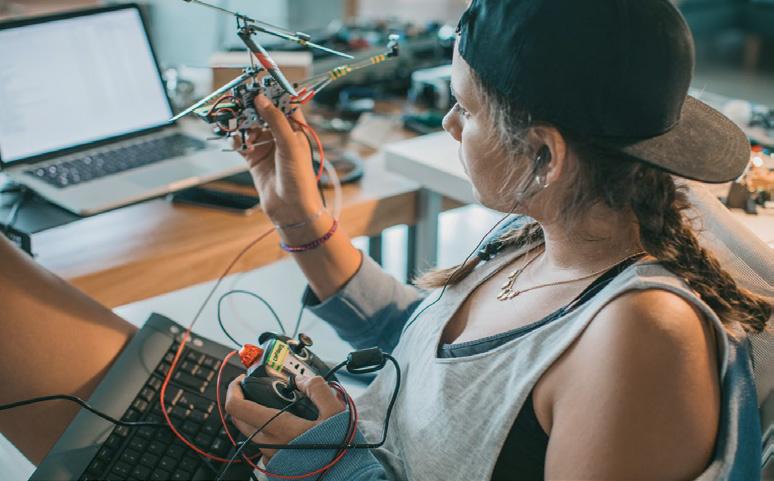
Solve for Tomorrow is a nationwide competition challenging New Zealand’s next generation of innovators to change the world for good
$20,000 in prizes up for grabs
Open to students in Years 5-10, the finalists will share $20,000 in prizes, including prize money and Samsung tech for them and their school. No experience needed. Just an idea that uses STEAM and a desire to make a difference.
Show us your creativity and innovation!
To find out more, visit www.samsung.com/nz/solvefortomorrow
partnership with
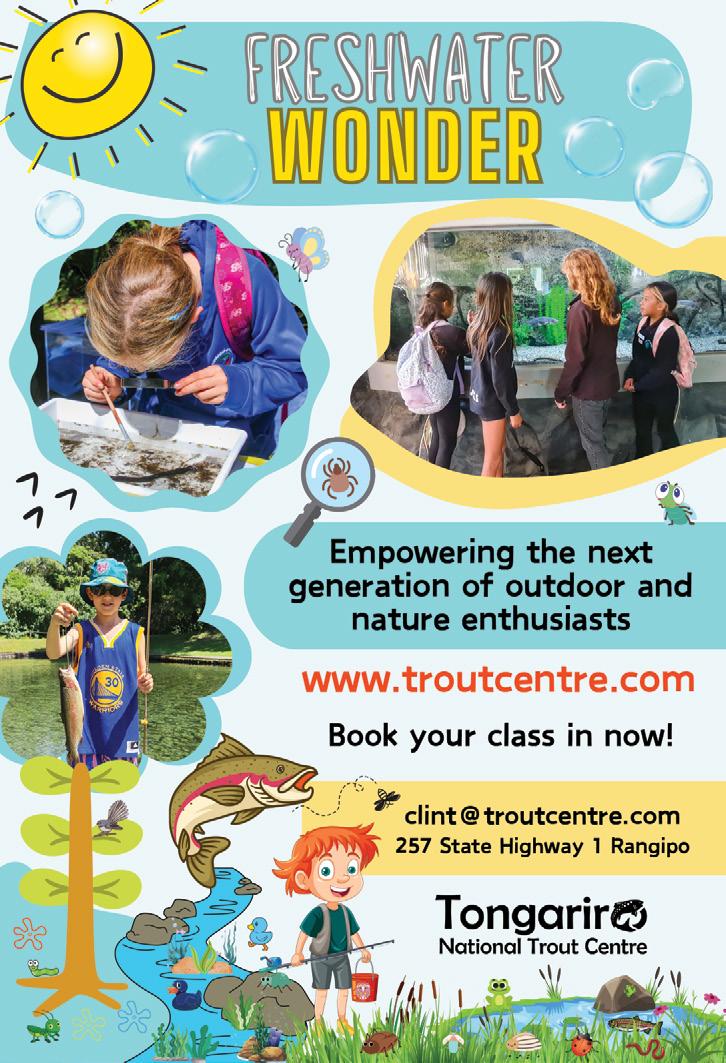



Ideal group accommodation for PE, Geography, and other school trips.
Our lodges provide the perfect base for adventures in the Tongiriro National Park.
From their doorsteps there are 80,000 hectares of UNESCO Dual World Heritage Area to explore.
CHOOSE FROM:
Our Chalet located at Whakapapa Village in the Tongiriro National Park.
The Chalet is a cosy 32 bed lodge, close to the Tongiriro crossing, Taranaki Falls track and all that the National Park offers.
Our spacious Turoa lodge is located in Ohakune and sleeps 38.
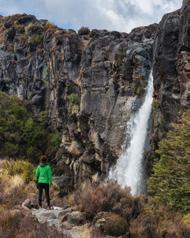

It is perfectly located for cycling trips, The Bridge to Nowhere and The Old Coach Road, Waiouru Army Museum and more. FOR MORE INFORMATION AND BOOKING ENQUIRIES: W: www.rsc.org.nz E: admin@rsc.org.nz P: 09 3773856 / 027 808 2163


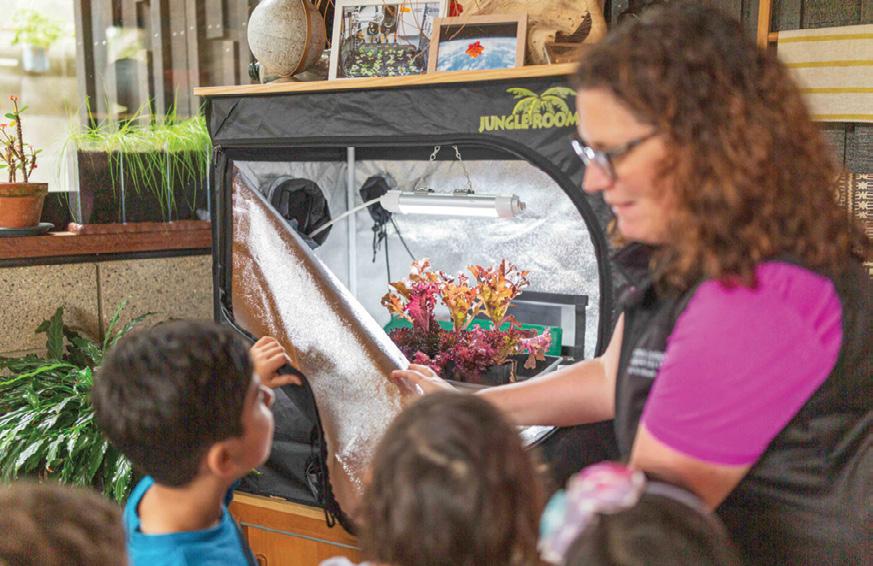

Wellington Botanic Garden offers bespoke learning opportunities to complement a Space Place visit. Extend ākonga learning through hands-on inquirybased programmes, just a short downhill walk away.
Wellington Botanic Garden offers bespoke learning opportunities to complement a Space Place visit.
Extend ākonga learning through hands-on inquirybased programmes, just a short downhill walk away.
Find out more wellington.govt.nz/education
Email: gardens.education@wcc.govt.nz
Find out more wellington.govt.nz/education
Email: gardens.education@wcc.govt.nz
Te Kaapuia o Te Waoku
We are all part of nature
Te Kaapuia o Te Waoku
We are all part of nature


FOR FIRST 30 PEOPLE*
Use code UQJ97T to receive $200 OFF individual tickets. *valid for June events only
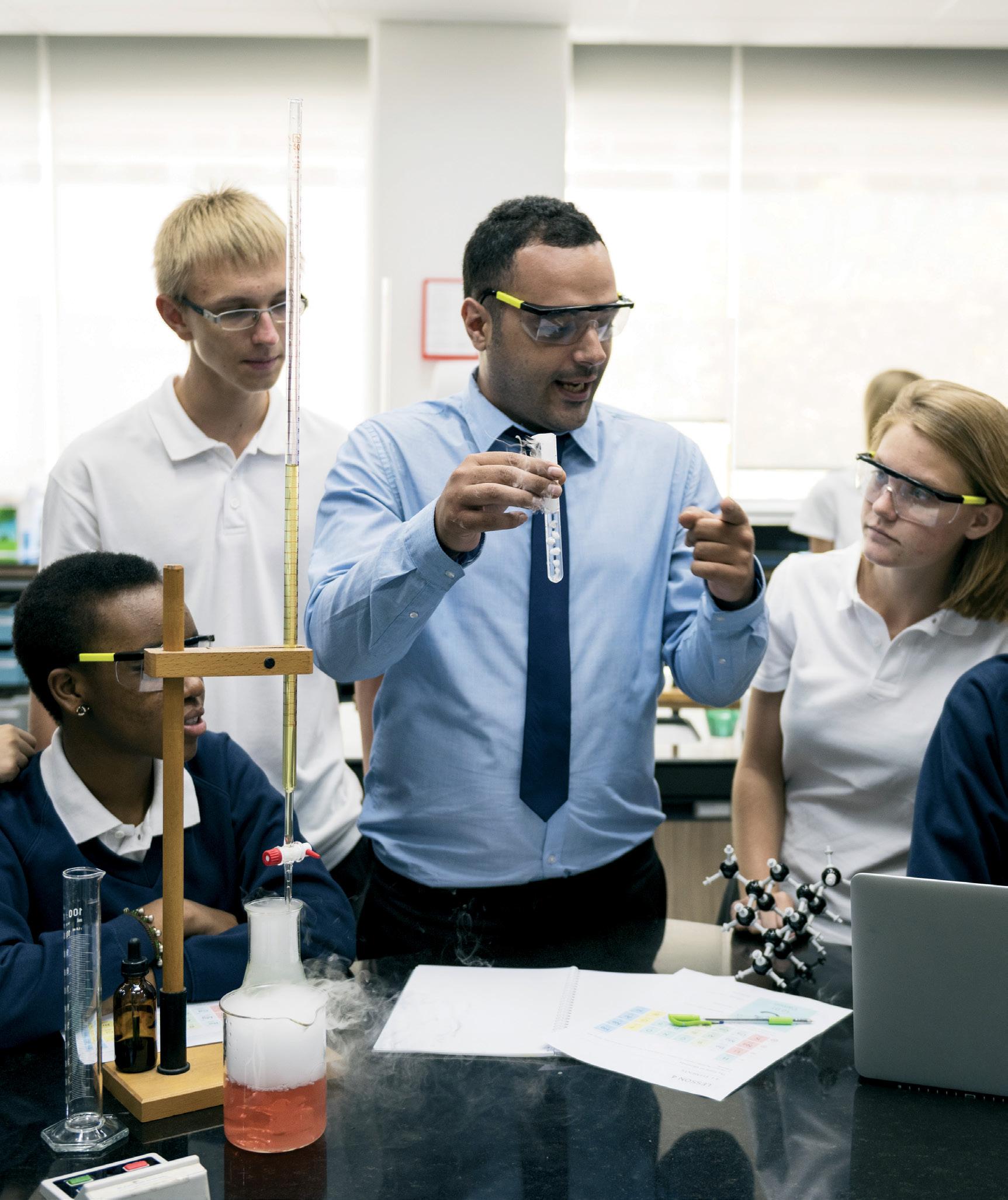
Your gateway to understanding the latest in education legislation with industry experts who can guide you through the complexities of modern education.
In 2024, school leaders face a rapidly evolving landscape, where staying updated on crucial legal and regulatory matters is more important than ever. This event is designed to keep educational leaders in the loop, offering insights into employment laws, privacy policies, student and staff well-being, effective communication, technological innovations, and much more.
18 - 19 JUNE 2024
brightstar.co.nz/LegalSchoolWEL WELLINGTON
24 - 25 JUNE 2024
brightstar.co.nz/LegalSchoolAKL AUCKLAND
